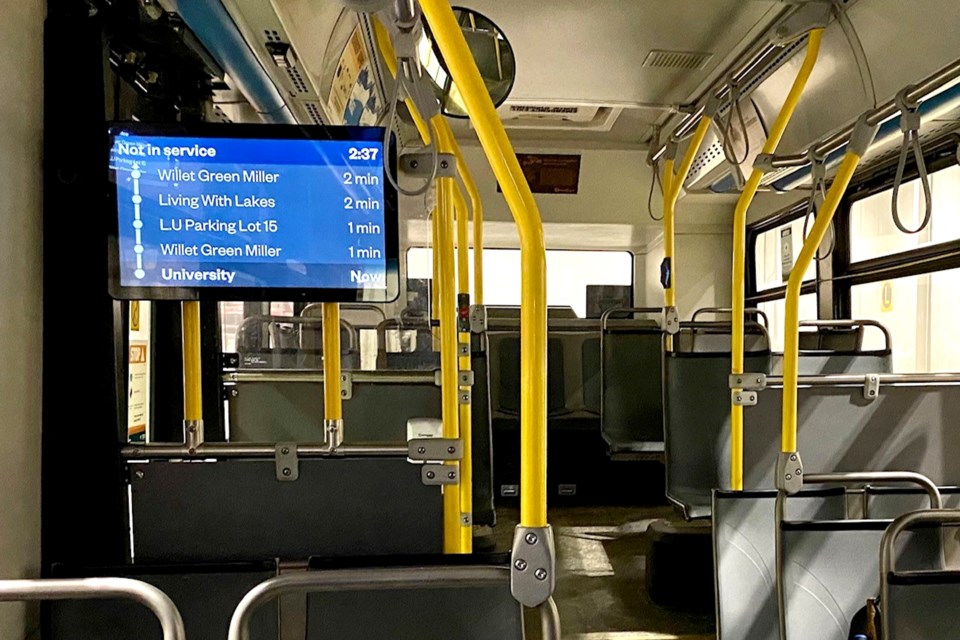While the City of Greater Sudbury could move forward tomorrow morning with running battery electric transit vehicles, the city still needs to create the infrastructure so that the buses could be charged up tomorrow night.
Sudbury's transit plans were one of the many topics discussed at the recent battery electric vehicle (BEV) conference that was held at Science North last week. The Greater Sudbury economic development office is moving to establish the city as a centre of innovation and excellence for BEVs since many of the critical minerals (nickel, cobalt, copper, lithium) needed for batteries come from Sudbury and other parts of Northeastern Ontario.
Brendan Adair, the director of Transit for the City of Greater Sudbury, told the conference that a feasibility study is underway to determine the economics of battery electric buses as well as the logistical challenges of putting BEV buses on the roads in Sudbury.
"The challenge is our infrastructure. The challenge is our routes. And we talked about range within the wintertime. We need to do the work now to prepare for exactly what we need from an infrastructure standpoint to charge. What routes need support in terms of additional buses or additional staff," Adair said.
He said the city's plan is to convert the fleet of 59 buses and 15 GOVA Support vehicles to battery electric by 2035.
"We're going to be looking at all of our routes and our topography and our climate and our ridership, and make informed decisions in terms of what we need," Adair told the conference.
In addition to that, Adair said GOVA will have to acquire a fleet of support vehicles that are also battery electric, which is part of the plan towards 2035.
He said the city's plan is to participate in a group buying process with 13 other Ontario municipalities through Metrolinx that should enable the municipality to purchase new vehicles Different municipalities in Ontario have estimated the cost of new electric buses at $1 million to $1.3 million. Those costs are expected to drop over a period of five to 10 years as battery prices drop. The other cost saving is expected to come from not having to purchase diesel fuel.
It all ties in with Greater Sudbury's Community Energy and Emissions Plan (CEEP) which follows a city council decision three years ago (2019) committing to action on climate change as a strategic priority. CEEP has a net zero emissions goal for Sudbury for 2050.
Dr. Jennifer Babin-Fenske, climate change coordinator for the City of Greater Sudbury, was another speaker at the conference. She said Sudbury is already known as a city with a record of positive environmental change, a city that "has been working on climate action as well for over two decades."
This has included the purchase of five battery electric vehicles, which she said has put Sudbury at the forefront of Canadian municipalities that are moving away from fossil-fueled vehicles, Babin-Fenske said. She said that will be one the key functions of achieving the net zero emissions goal, since data has revealed Sudbury is still a significant producer of greenhouse gas emissions.
"The baseline data shows that the top sources of greenhouse gas emissions for us are industrial emissions, personal vehicles and residential buildings especially for heating," Babin-Fenske said.
She said one of the goals is for Greater Sudbury to have all city vehicles and transit vehicles converted to battery electric by 2035.
She said there is also the hope that 100 per cent of new vehicle sales in Canada will take place by 2030, just eight years from now.
Babin-Penske said another hope is to phase out the use of gasoline and diesel powered vehicles in Sudbury, but there is a challenge stemming from the size of the municipality. She said the boundaries of Greater Sudbury take in more than 3,000 square kilometres of area while Toronto, by comparison, has roughly 630 square kilometres of land.
"So we want people to bike and walk. But as you can see, unless you live near your school, grocer and employment, it can be quite difficult. So we need to focus on carpooling, taking transit and going electric," Babin-Fenske said.
Len Gillis covers health care and mining for Sudbury.com.
